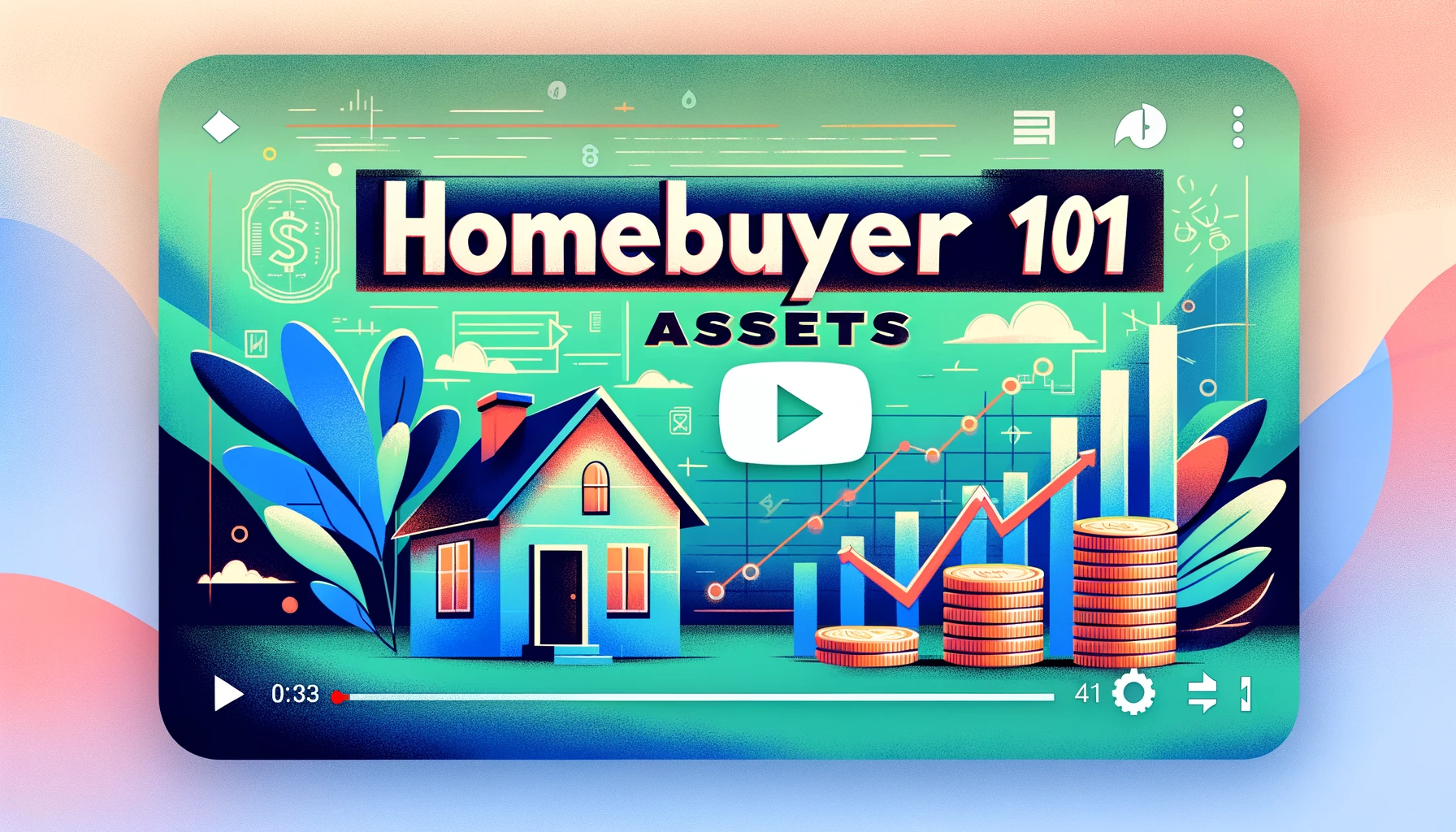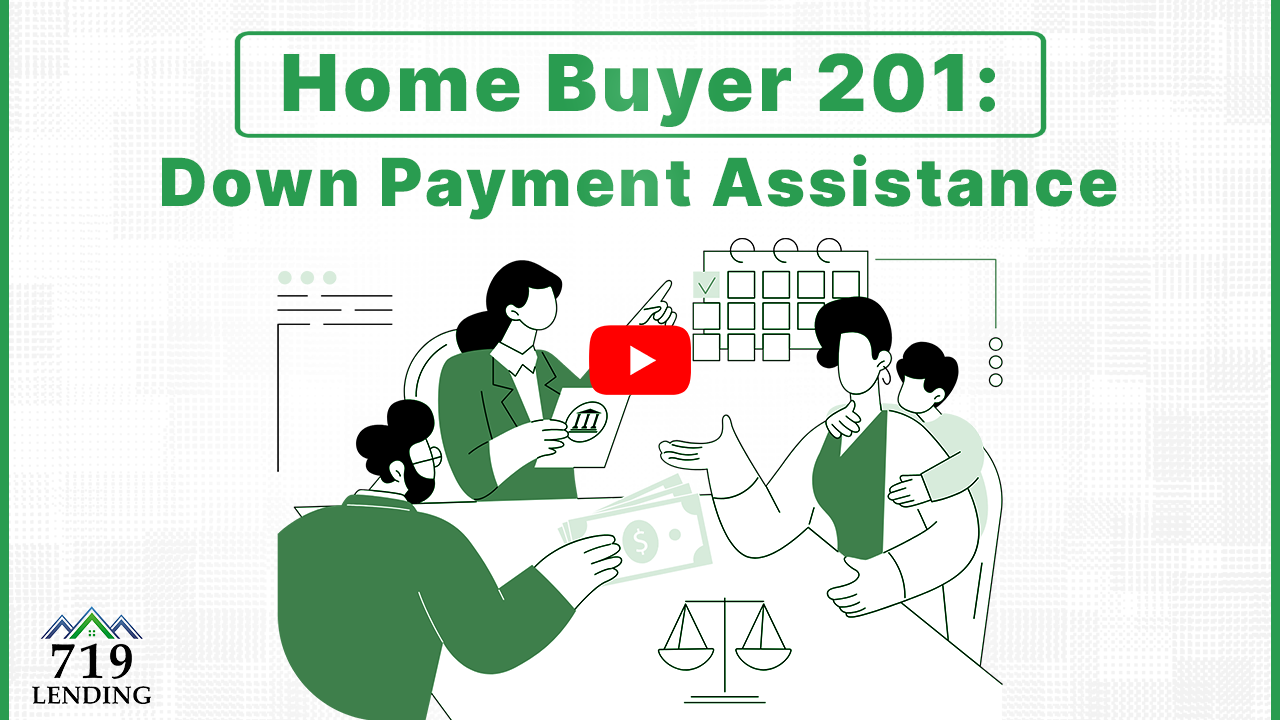6 minute lesson Lesson Summary Importance of timely document submission for your loan Types of…
Homebuyer 101: Non QM Loans
6 minute lesson
Lesson Summary
-
Non QM loans are alternative lending options outside of Fanny May and Freddy Mac’s qualified mortgage criteria.
-
Non QM loans are still mortgages, but they don’t fit within the specific box set by Fanny May and Freddy Mac.
-
Non QM loans can be beneficial for certain situations and investors.
-
Real estate agents and banks also use non QM loans.
-
Non QM loans focus on the bigger picture and the wise investment rather than fitting everyone in the country.
Ever wondered about the roadmap to homeownership when traditional paths seem out of reach? Just as a hiker might find an alternate trail up the mountain, so too can home buyers discover different routes to a mortgage.
It’s called a Non-QM Loan.
When the conventional trail – the one blazed by Fannie Mae and Freddie Mac – doesn’t align with your journey, Non-QM Loans offer a path tailored to your unique financial landscape. They embrace the bigger picture of your investment potential.
Understanding Non-QM Loans
Non-QM loans, or non-qualified mortgages, serve as the financial industry’s side routes when Fannie Mae and Freddie Mac’s well-trodden paths don’t match your circumstances. These loans eschew traditional benchmarks like strict debt-to-income ratios, instead emphasizing a holistic review of your financial health and investment savvy. With Non-QM loans, lenders accommodate a diversity of income types and credit histories, crafting loan solutions that respect your unique position in the quest for homeownership. Whether you’re an entrepreneur with irregular income streams or a property investor looking for flexibility, Non-QM loans could be your gateway to securing that coveted home address.
Defining the Non-Qualified Mortgage
A Non-Qualified Mortgage—Non-QM—offers flexibility beyond conventional loan constraints, catering to varied financial situations.
Non-QM loans expand homeownership opportunities, adapting to diverse incomes and unconventional financial profiles.
These loans appraise your financial health comprehensively, valuing investment potential over strict traditional lending criteria, such as debt-to-income ratios.
Non-QMs facilitate lending when your profile diverges from Fannie Mae or Freddie Mac’s guidelines—opening doors to innovative financing solutions.
Key Differences from Standard Loans
Non-QM loans often feature more flexible income verification processes than standard loans, which typically require W-2s or tax returns.
Debt-to-Income (DTI) ratios have greater leniency within Non-QM lending guidelines.
Credit score requirements can differ substantially, with some Non-QM loans available to individuals with lower credit scores who might not qualify for conventional mortgages, emphasizing the bigger financial picture.
Non-QM loans cater to a niche market by assessing broader criteria rather than strictly conforming to the “one-size-fits-all” approach of Fannie Mae and Freddie Mac, thus offering tailored solutions for borrowers with unique financial scenarios. They might involve alternative documentation, like bank statements or asset depletion models, to demonstrate the borrower’s ability to repay.
Who Benefits from Non-QM Financing
Non-QM loans extend opportunities where conventional lending falls short, serving those with atypical income streams or credit histories.
- Entrepreneurs and Self-Employed Individuals who may have irregular income patterns or non-traditional tax documentation
- Real Estate Investors looking for flexibility in financing multiple properties beyond conventional loan limits
- Foreign Nationals who lack a U.S. credit history but seek property ownership in Colorado Springs
- Borrowers with High Net Worth but complex financial situations that don’t align with traditional debt-to-income calculations
- Recent Credit Events for individuals recovering from financial missteps like bankruptcy or foreclosure
Borrowers outside the ‘vanilla’ borrower box find a path to homeownership through Non-QM’s adaptive lens.
Non-QM lending provides a solution tailored to each borrower’s unique financial tapestry, not just a credit score.
Non-QM Eligibility and Requirements
Non-QM loans diversify the lending landscape, broadening qualification criteria to include unconventional income sources and asset types. High net-worth borrowers, for instance, may leverage assets in lieu of traditional income verification, opening doors to financing that might otherwise be closed.
Eligibility for non-QM loans centers on a holistic assessment of financial health rather than rigid benchmarks, privileging a borrower’s complete financial picture over a single qualifying metric. This approach unlocks potential for a more diverse group of homebuyers in the Colorado Springs market.
Assessing Financial Profiles
Non-QM loans reflect a more creative approach to evaluating borrower financial health. Lenders consider the full spectrum of fiscal indicators, delving deeper into the nuances of each individual’s financial journey. This means not just looking at credit scores and income, but also considering the strength and consistency of your financial assets.
When assessing for a non-QM loan, lenders may place significant emphasis on your employment history and its projection of stable income. This is alongside a robust analysis of cash flows from various sources, which can include anything from rental properties to irregular business income. For self-employed individuals, this often means submitting profit and loss statements, bank statements, and other financial documentation.
In this realm, the remnants of past financial challenges like foreclosures or bankruptcies don’t overshadow current fiscal responsibility. Lenders will dissect your financial recovery with care, appreciating strides made toward fiscal stability. This sympathetic perspective in analysis ensures that past difficulties do not unjustly hinder your present opportunities.
Additionally, non-QM lenders recognize the potential in asset-rich borrowers, even if liquid income is harder to verify. They review asset depletion models and consider the use of investments or savings as indicators of your ability to repay the loan. This becomes particularly useful for retirees or those with substantial but irregular income streams.
Ultimately, a non-QM loan prioritizes transparency and a comprehensive understanding of risk. It’s designed to paint a more accurate portrait of your financial landscape, beyond conventional loan constraints. Therefore, preparing a detailed account of your finances is crucial when seeking a non-QM loan.
Credit Considerations in Non-QM
A solid credit history is not always essential; non-QM lending appreciates the broader financial narrative. Lenders examine the entire story, allowing for nuanced decision-making tailored to individual circumstances.
Non-QM loans provide latitude for those with complex credit profiles. If you have non-traditional income sources or sporadic earnings, your financial stability can still be demonstrated through consistent payment histories and strong cash flow management. Under non-QM scrutiny, other financial markers gain prominence, and a single credit misstep won’t necessarily disqualify you.
Furthermore, credit events that may disqualify you from conventional financing, like recent bankruptcies, may not be deal-breakers. Non-QM underwriting carefully weighs such incidents against evidence of recent financial responsibility and recovery. It’s a process that values progress and current ability to manage finances over historical credit misfortunes.
In short, non-QM lenders look at the composite of your financial habits. They recognize that creditworthiness isn’t solely about a credit score; it’s also about the consistent ability to handle financial commitments. This mindset allows for a broader range of borrowers to access home financing, fostering opportunities for those with diverse credit histories to realize their property investment dreams.
Income Documentation Variations
Non-QM loans offer flexibility in income verification methods. This is vital for applicants with non-traditional earning structures, such as self-employed individuals, who may lack the standard W-2 forms needed for conventional loans. Non-QM lenders often accept alternate documentation, like profit and loss statements or bank statements, to substantiate income claimed.
For instance, self-employed borrowers might present tax returns that show income after deductions, which often underrepresents their actual cash flow. Non-QM lenders understand this discrepancy and may consider additional documentation to get a true picture of income. They might look at bank statements spanning 12 to 24 months or use a form called a 1099, which reflects gross income before expenses.
Similarly, real estate investors may have rental income as their primary cash flow. Traditional lenders typically require a history of rental income documented on tax returns, which may not exist for newer properties. Non-QM loans accommodate these scenarios by allowing borrowers to use projected rental income from the property to qualify for a mortgage.
Finally, for contractors or freelancers whose income is project-based and fluctuates, non-QM loans can be a lifeline. These borrowers might have high earning potential but face challenges documenting steady monthly income. Non-QM lenders may tailor their income assessment to include contract agreements and payment cycles, enabling these individuals to secure a home loan despite having a less predictable income stream.
Evaluating Non-QM Loan Features
When assessing the intricacies of Non-QM loans, it’s paramount to understand the flexibility woven into their structure. These loans open doors for those who may find themselves outside the conventional lending parameters by accounting for a mosaic of income paths and financial backgrounds. Potential borrowers should meticulously review the terms offered, recognizing that Non-QM lenders prioritize the overall financial health and viability of an investment. They evaluate the borrower’s full financial narrative, crafting loan conditions that respect both the lender’s risk and the borrower’s potential for long-term success. As such, it’s crucial to analyze interest rates, repayment schedules, and any associated costs to ensure the loan aligns with your financial horizon.
Interest Rates and Risk Assessment
Interest rates for non-QM loans frequently surpass those of conventional loans due to heightened perceived risk.
- Credit History Analysis: Less emphasis on traditional credit score, focusing on comprehensive financial behavior.
- Income Documentation: Alternative documentation accepted to demonstrate repayment ability.
- Equity Requirements: Often necessitates larger down payments to mitigate lender risk.
- Rate Adjustments: Possibility of higher initial rates or rate adjustments over time.
Risk considerations shape the interest rates; therefore, thorough financial examination is crucial.
Non-QM lenders tailor rates based on a broader and more nuanced risk assessment compared to standard loans.
Loan Structure and Terms
Non-QM loans present a unique structure that caters to diverse financial situations, often involving flexible term lengths and bespoke repayments.
Borrowers may encounter terms extending up to 40 years, unlike traditional 15 or 30-year loans.
These loans can include interest-only periods, allowing lower payments at the loan’s onset.
Prepayment penalties might apply, discouraging early loan settlement and ensuring lender returns.
Non-QM loans often allow the use of assets as income verification, enabling self-employed individuals or retirees to demonstrate financial stability with less conventional documentation.
Balloon payments may also feature, where a large lump-sum is due at the loan’s end, requiring strategic financial planning.
Prepayment Penalties and Balloons
Prepayment penalties discourage paying off a loan earlier than the agreed term. They ensure the lender’s anticipated earnings.
Such penalties can significantly impact the loan’s affordability, particularly if you plan to sell or refinance early.
For non-QM loans, the specifics of prepayment penalties can vary widely and depend on the lender’s policies and loan terms.
It’s imperative to understand the prepayment clause to avoid unexpected costs when managing your mortgage strategically.
Balloon payments necessitate careful financial planning, as they require a sizable payment towards the loan’s conclusion.
Securing a Non-QM Loan
When considering the pursuit of a Non-QM loan, the first step is to engage with a knowledgeable lender who is experienced in these unique types of mortgages. This professional will help navigate the complexities inherent to such financial products, ensuring that both the borrower’s needs and the regulatory standards are met in a manner beneficial to all parties involved.
Finding the right fit for a Non-QM loan is akin to crafting a bespoke financial suit—it must be tailored to the individual’s circumstances, making the lender’s insight invaluable. As these loans do not adhere to the strict underwriting guidelines of conventional loans, a keen understanding of the borrower’s complete financial picture is essential. This might involve a deep dive into credit history, cash flow analysis, and the evaluation of assets in a holistic assessment to structure a loan that’s both feasible and fiscally sound.
Shopping for Non-QM Lenders
Venturing into the Non-QM territory calls for a meticulously chosen lender partner.
- Research and Compare: Sift through various lenders, compare rates, fees, and terms.
- Examine Expertise: Shortlist lenders with demonstrated experience in Non-QM loans.
- Seek Personalized Options: Choose lenders that offer bespoke solutions tailored to your financial narrative.
- Verify Flexibility: Ensure they have adaptable underwriting processes suited for unconventional income sources.
- Read Reviews: Look at testimonials and feedback from other borrowers to gauge reliability and service quality.
- Discuss Transparency: Transparency in communication and fees should be a non-negotiable trait in your lender.
Find a lender that values understanding your unique financial story over rigid criteria.
The right lender will offer insight, flexibility, and a smooth sailing Non-QM loan process.
Application Process for Non-QM
Begin with a personalized consultation.
Dig into your financial narrative during this initial phase. Your lender will assess your income, assets, and investment goals. Unlike traditional mortgages, Non-QM lenders prioritize your holistic financial health over strict adherence to standard qualifying metrics. They’ll weigh the merits of your application on a broader spectrum.
Gather your documentation meticulously.
Your lender starts the underwriting process – assessing risk and payment potential. With a focus on individual financial situations, Non-QM lenders may require alternative documentation. This might include bank statements or asset depletion loans to verify your income.
Submit to detailed financial scrutiny.
Your application undergoes in-depth analysis. Lenders check for prudent investment decisions rather than just ticking off standard qualification boxes. If your unconventional financial picture includes substantial assets, strong credit, or significant down payments, your odds may improve.
Await the lender’s decision with patience.
After thorough review by underwriting, you’ll be informed about approval chances. Keep in mind, criteria for Non-QM loans can vary greatly among lenders. Stay in close contact for any additional information they might need, ensuring the most accurate and swift decision possible.
Closing and Post-Closing Considerations
As you approach the finish line, ensure all contingencies are met and funds are ready for transfer. Precision is key as you navigate this final stage, often filled with critical last-minute details.
Ensure every closing document is thoroughly reviewed. Missed details can lead to unnecessary complications post-closing.
Remember, closing day is just the beginning of your homeownership journey. Secure proper insurance (homeowner’s policy and if required, mortgage insurance) to protect your investment.
Confirm all utilities are ready for transfer. Overlooking this can result in inconvenience and potential disruptions post-move.
After keys are in hand, stay diligent with financial commitments. Timely mortgage payments are paramount to maintaining good credit and staying on favorable terms with your lender.
Finally, keep your lender informed of any significant changes in your financial situation. Open communication ensures they can provide support and advice when needed.




